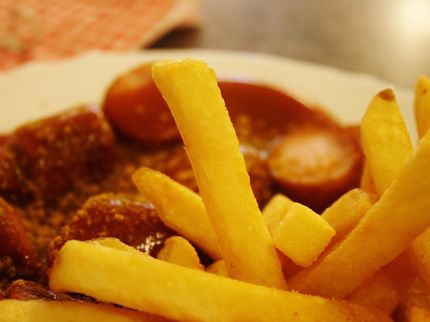Sugar decrease from confectionery the smallest
Study by the Universities of Bonn and Paderborn: Consumption is declining, but still above the recommendations
Advertisement
Researchers from the Universities of Bonn and Paderborn show that although the sugar intake of children and adolescents in Germany is declining, the contribution from confectionery in particular is still clearly too high. sweets are the largest source of sugar for children and adolescents, but are not yet covered by the National Strategy for Reduction in Finished Products. The scientists suggest that this should be reconsidered. The results have now been published in the journal "Nutrients".
Adolescents are particularly susceptible to high sugar intake, as they have a genetically determined preference for sweets. A few months ago, scientists from the Universities of Bonn and Paderborn have already shown that although the sugar intake of children and adolescents in Germany has been declining since 2005, at 16 percent of energy intake, it is still well above the recommendations of the World Health Organisation (WHO) of a maximum of ten percent. The researchers have now investigated how the supply from different sugar sources has changed.
The team of researchers of the DONALD study (DOrtmund Nutritional and Anthropometric Longitudinally Designed Study) evaluated a total of 10,761 three-day weighing protocols, which were recorded between 1985 and 2016 by 1312 children and adolescents aged three to 18 years. For three days, they weighed which foods had been consumed by each person. This time the scientists focused on the intake of free sugars as a percentage of the daily energy intake from seven food groups: Sugar and sweets, juices, dairy products, sugar-sweetened drinks, sweet breads and cakes, breakfast cereals and other sources.
It is important to distinguish between "free sugar" and "total sugar". Free sugar is the sugar in the food that is added by the manufacturer or during household preparation, plus sugar from juices. Total sugar, on the other hand, takes into account the complete sugar content of a foodstuff, including the sugars contained naturally.
Confectionery had by far the largest share
"Confectionery and sugar had by far the largest share in the intake of free sugars, followed by juices," says Dr. Ute Alexy from the University of Bonn, who is leading this project. While sugar-sweetened beverages ranked third in the years 1985 to 2005 with 15 percent, dairy products were the third largest source of free sugars in the years 2006 to 2016 with 12 percent. Dr. Alexy: "In contrast, the intake of free sugars from sweet breads and cakes and breakfast cereals was generally low in all age groups at all times.
Analyses of time trends show that the intake of free sugar from sweets and sugars as the main source decreased in girls, but to a much lesser extent than intake from other sources. The intake of sugar-sweetened drinks by boys and girls fell, while the consumption of free sugars from juices initially increased until 2000, but has also fallen significantly since 2005. The intake of free sugars from dairy products increased slightly until 2010, but has been declining again since then.
"Even though the decrease in the intake of free sugars, especially from sugar-sweetened drinks and juices, is already a welcome development, the intake is still far above the recommendations," says Dr. Alexy. Measures should therefore be implemented to support this trend. Prof. Anette Buyken from the University of Paderborn, who worked on the DONALD study until 2017 and initiated the project together with Dr Alexy, adds: "As the decrease in intake from confectionery and sugar was the least pronounced, but this is the largest source of free sugar in children and adolescents, consideration should be given to including it in future public health measures". Until now, these sources have been excluded from the National Strategy for the Reduction of Sugar, Fats and Salt in Finished Products, as they are luxury foods that are ideally rarely consumed. "This should be reconsidered and confectionery should be included in the National Strategy," says Prof. Buyken.
The DONALD study
The DONALD study is a long-term study on the impact of nutrition on humans, financed by the state of North Rhine-Westphalia. At present, around 700 healthy children and young people are taking part. Since 1985, detailed data on nutrition, growth, development, metabolism and health status have been collected from infants to adults at regular intervals. Since January 2012, the long-term study conducted in Dortmund has been a branch of the Institute of Nutrition and Food Sciences (IEL) at the University of Bonn. This research project is funded by the Federal Ministry of Food and Agriculture (BMEL) via the Federal Agency for Agriculture and Food (BLE).
Note: This article has been translated using a computer system without human intervention. LUMITOS offers these automatic translations to present a wider range of current news. Since this article has been translated with automatic translation, it is possible that it contains errors in vocabulary, syntax or grammar. The original article in German can be found here.





























































